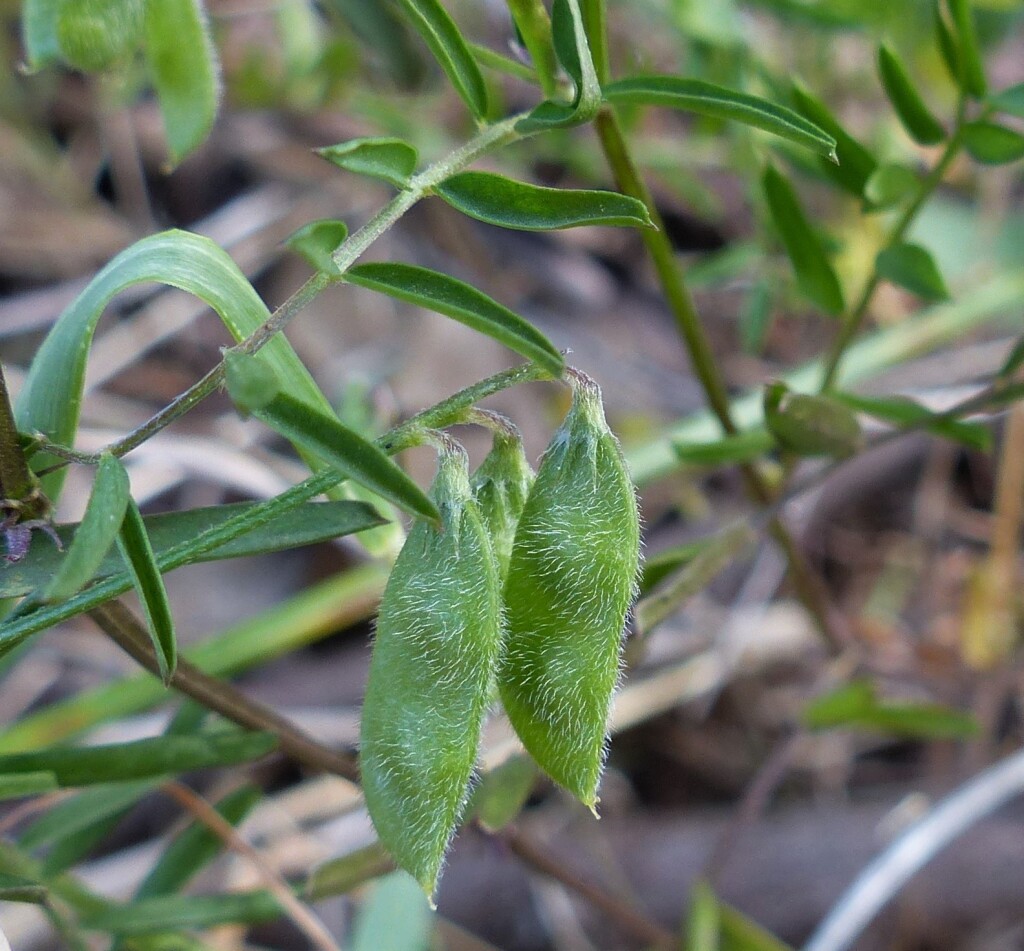Vicia hirsuta
(L.) Gray Tiny VetchTrailing, climbing or ascending annual herb; stems 20–80 cm long, angular, glabrous or sparsely hairy. Leaves 2–8 cm long excluding the usually pinnate tendril; leaflets 8–20, linear to lanceolate, 5–25 mm long, 1–4 mm wide, glabrous or lower surface sparsely appressed-pilose; stipules linear, 2–4 mm long, 1–4-toothed on one side. Flowers 2–8, pedunculate; peduncle about half as long as subtending leaf; pedicel c. 1 mm long; calyx campanulate, 1.5–3 mm long, sparsely pubescent, teeth linear-subulate, subequal, longer than calyx tube; corolla 3–5 mm long, pale blue or pink; standard broadly ovate, hardly longer than wings, limb longer than claw; keel shortest, blue-tipped. Pod oblong-rhomboid, 6–12 mm long, 2–4 mm wide, compressed, grey-brown to brown-black, pubescent; seeds 1–3, usually 2, subglobose, c. 2.5 mm long, compressed, brown, often mottled. Flowers mainly Jun.–Feb.
MuM, Wim, GleP, VVP, VRiv, MuF, GipP, OtP, WaP, Gold, CVU, DunT, NIS, EGL, EGU, HSF, OtR, Strz, VAlp. Also naturalised WA, SA, Qld, NSW, ACT, Tas., New Zealand. Native to Europe, northern Africa, western Asia. Widespread across the state where found in drier areas on roadsides, in pasture and other disturbed sites.
Jeanes, J.A. (1996). Fabaceae. In: Walsh, N.G.; Entwisle, T.J., Flora of Victoria Vol. 3, Dicotyledons Winteraceae to Myrtaceae, pp. 663–829. Inkata Press, Melbourne.
 Spinning
Spinning



